Love those leafy, crunchy Bok Choys but are confused about how to cut them? Worry not, fellow-veggie lovers, we’ve got your back!
Bok Choy or Pak Choy is an Asian delicacy that is a favorite to both foodies, as well as fitness freaks. It tastes somewhere between cabbage and celery. The green leaves give it a bitter-sweet flavor whereas the crunchy white stalk makes it ideal for salads.
Bok Choy is a low caloric, nutritional powerhouse. Loaded with vitamins, calcium, iron, and zinc; it not only makes your bones and gut strong but also contains anti-cancer and anti-diabetic properties. It can be eaten raw or be added to a variety of recipes.
Today, we will be talking about all that you need to know on how to choose, cut, store and cook Bok Choy. So just sit back, relax and keep reading!
Table of contents
Choose the right bok choy

Available in three varieties- Traditional, Shanghai, and Baby bok choy – Bok choy can differ in their color, size, and flavors.
- Traditional bok choy has crunchy white stalks with dark crinkled leaves.
- Shanghai bok choy has jade green stems with bigger, spoon-shaped leaves.
- Baby bok choy is a variety of traditional bok choy which is harvested earlier and is, therefore, smaller in size with thicker stems.
When buying bok choy keep in mind the following points:
- Always look for crunchy stalks and bright sturdy leaves.
- Avoid vegetable that has limping or discolored leaves.
- Avoid bok choy with holes in their stems.
Washing and preparing bok choy
Cleaning
You can either eat bok choy raw or can cook it up. In any case, first things first! Once you plan on treating yourself with that bok choy, make sure to rinse it thoroughly with cold water.
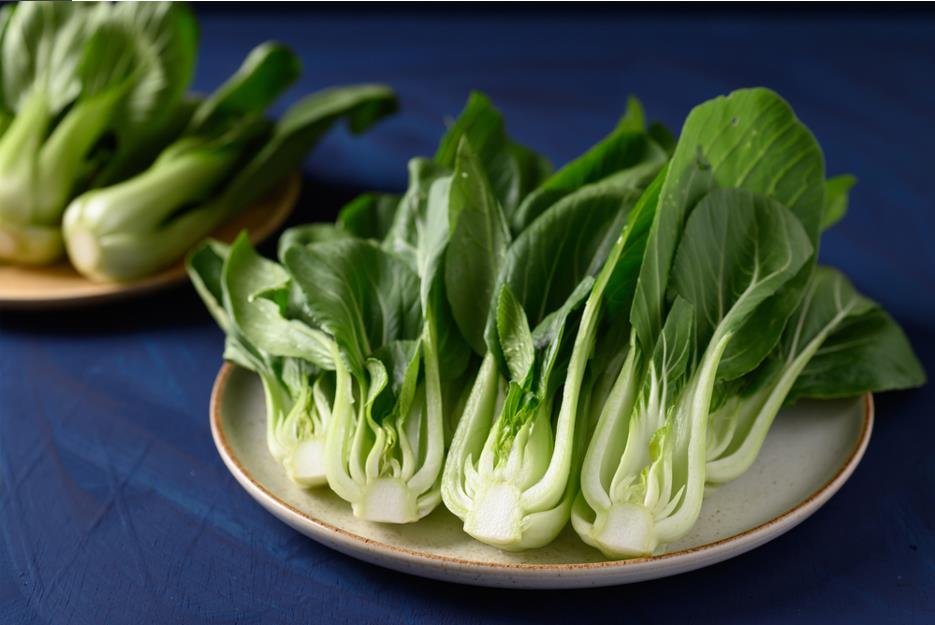
Using a sharp knife, cut the stem (about 1 inch). This helps in cleaning the plant (especially bigger ones) efficiently.
Handpicked for you
True cutting power in the palm of your hand
Bok Choy, or the Chinese cabbage, almost always has dirt accumulated in between its leaves. While washing gently separate the leaves to wash out any dirt that is trapped within. Also, keep an eye for any rubbery or discolored leaves.
Storage
If you don’t plan on cooking your bok choy right away, you can always refrigerate them in a resealable plastic bag.
Once the plant is in the bag, gently push out all the air in the bag, seal it, and toss it in the vegetable drawer.
It is best to use the stored bok choy within 4 days to ensure a fresh taste.
Bonus tips
- Don’t stuff the vegetable in the bag. 3 to 4 bok choy in a medium-sized bag is sufficient.
- Wash your vegetables just before cooking them. Storing wet vegetables will lead to water retention in leaves. This can cause wilting or a bland taste.
How to cut bok choy?
You can eat your bok choy right away or can cut it in a variety of ways.
Before cutting and preparing your bok choy, just make sure you have a clean chopping board and a sharp knife.
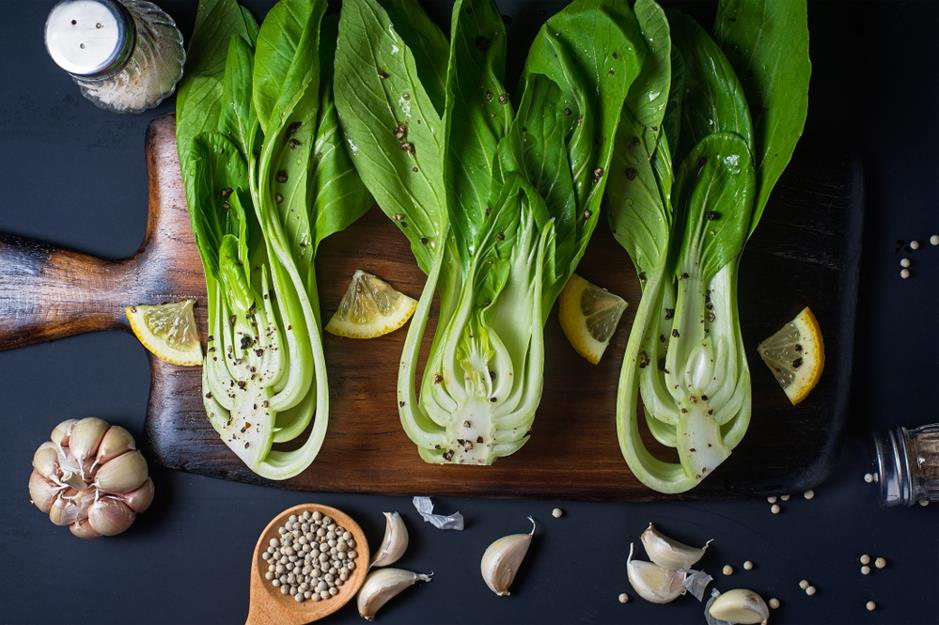
Cutting bok choy into halves or quarters
If the recipe requires you to cut the bok choy into halves or quarters, here’s how to do it:
Place the bok choy on the cutting board and, using a sharp knife, cut it into halves, longitudinally.
For quarters, cut each half into halves again.
Bonus tip
- Trim the base (about ½ inch) to cut off the root but make sure you save the stem.
- This will save the nutrients in the stem while keeping the leaves attached at the base, making it easier for you to cut them.
Cutting bok choy into leaves
This is the simplest way of preparing bok choy. Just cut the stem and separate the leaves, by pulling them apart, gently.
Cutting bok choy into rectangles
The stem is packed with nutrients, so why waste it? Chop off those stems either lengthwise or horizontally and toss them in your salads to add up some crunch.
To cut the stem into rectangles separate all the leaves (or as much as possible). Now cut the stem into half, longitudinally, and then crosscut the halves into 1-inch rectangular pieces.
Bonus tip
- Keep the stems and leaves separated when cooking. Because the stems are thicker than the leaves, their cooking time is different.
- Add the stems in the start while adding the leaves just before finishing.
Julienne, chiffonade and mince cut
If you’ve passed the beginner’s test and want a visual variety, you can use the following chopping techniques to present your bok choy.
| Julienne | Chiffonade | Mince |
| best for cutting crunchy vegetables | suited for leafy vegetables | for very fine chopping |
| Stack the leaves on top of each other. Use a sharp knife to make thin slices. Cut the leaves by keeping the knife at a 45° angle. | Stack the leaves on top of each other.Roll them tightly.Keeping a firm hand cut all the way, starting from the narrow end. | Cut strips using any of the prior methods. Stack the strips on top of each other. Keep your free hand on the blunt side of the blade and chop up and down, throughout the stack. |
| yields thin strips like matchsticks. | yields strips of varying size and thickness. | yields very small pieces that can be cooked in no time. |
How to cut bok choy for stir fry
Stir-fried vegetables are an all-rounder. They are crisp and colorful, require minimal effort, and are surprisingly delicious.
In the case of baby bok choy, don’t cut them and stir fry them as it is. However, you might want to trim the base a bit. Keeping the baby bok intact adds a variety of textures to the dish.
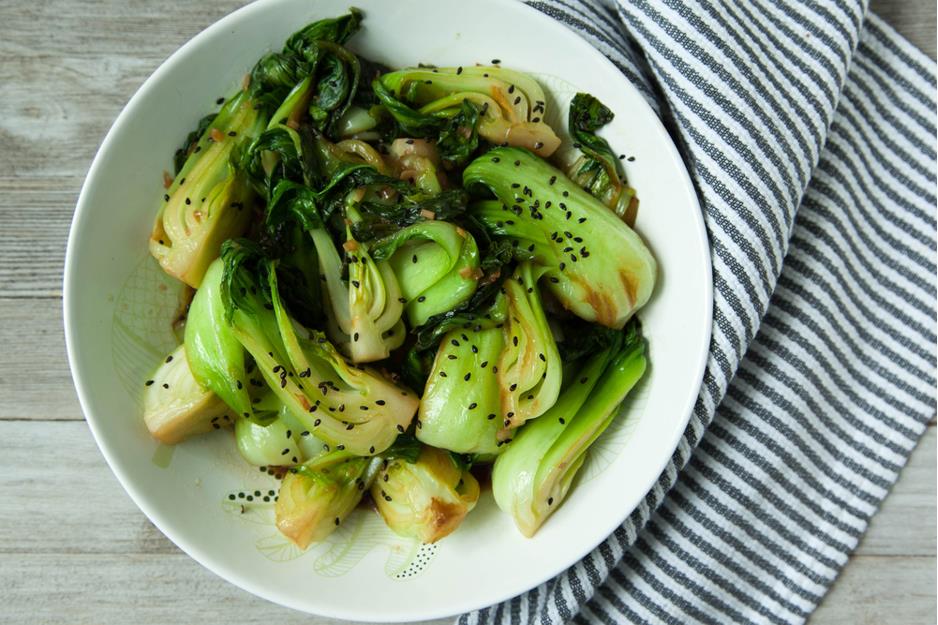
For stir-frying large heads of bok choy, cut the bok as instructed below:
- Cut the bottom of the bok choy, and gently pull apart the stalks.
- Rinse the vegetable and pat dry it with a paper towel.
- Cut the bok and separate the leafy green part from the white stems.
- Stack the leaves and cut them using the chiffonade method.
- For the stalks, cut individual stalks into quarters, as formerly mentioned.
Nutrition and health benefits of bok choy
Bok Choy, like many other cruciferous vegetables, is packed with nutrients.
Ranked 6th on the American Nutrient Density Index (ANDI), a cup of chopped raw bok choy contains 9 calories (only!), which certainly fulfills a large chunk of an adult’s vitamin(A, K, C), calcium and potassium needs.
Bursting with nutrients, bok choy strengthens the immune system against several diseases, such as:
- Cancer: Bok choy contains Folate, Selenium, and other antioxidants which help to control DNA mutations, fight against cell-damaging free radicals and reduce tumor growth.
- Osteoporosis/ Arthritis: The Calcium, Iron, Phosphorus, and Potassium in Bok choy, all strengthen the bones and reduce the risk of bone porosity. Vitamin K helps in calcium absorption and Zinc attributed to the production of collagen in your body.
- Blood pressure: Potassium and magnesium considerably lower the risk of hypertension.
However, excess of everything is bad! Bok choy contains glucosinolates and (encourages the production of) homocysteine and eating too much of it can cause allergic reactions, and damage blood vessels.
How to cook bok choy- 3 quick and easy bok choy recipes
Bok choy remains equally delicious when eaten raw or cooked. However, cooking the bok surely adds up to its flavor.
Below we have added some of our favorite recipes of bok choy, which are easy to make and mouth-watering.
Garlic bok choy
This is my go-to recipe for a side dish. Bursting with flavors and textures, you can get done with this in barely 10 mins.
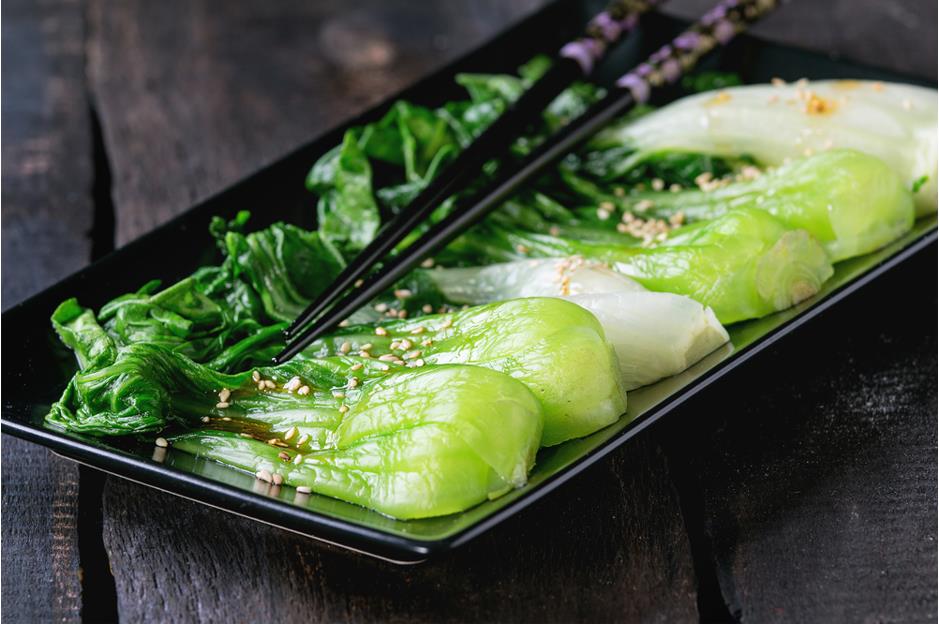
All you need are some fresh baby bok choy and the basic condiments in your kitchen.
For the complete recipe, click here.
Bok choy chicken soup
Bok choy adds a heavenly touch to your otherwise regular soups.
You can use the chicken/shrimp leftover, homemade broth or can customize this any way you want.
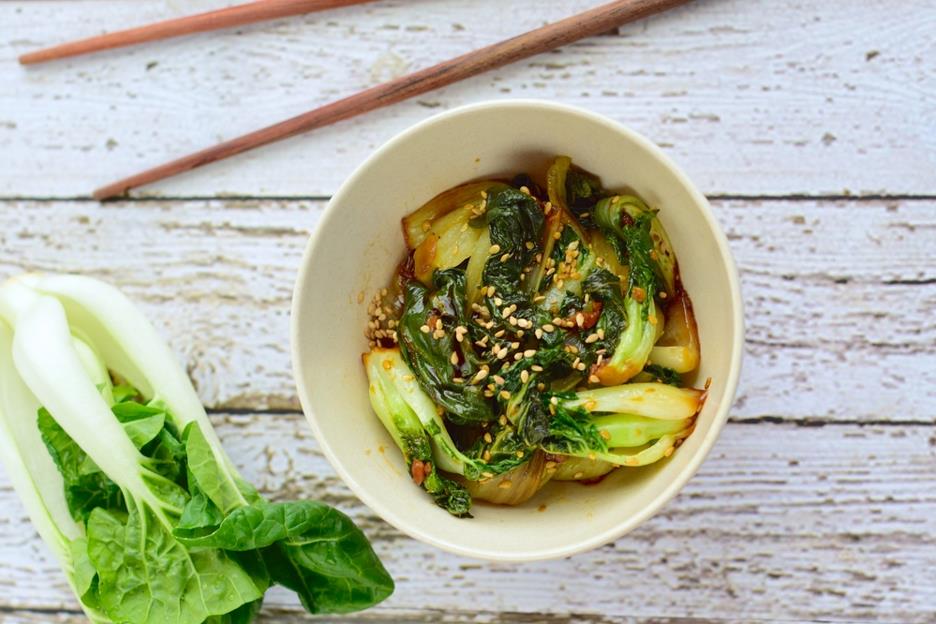
One thing we know for sure, You will never regret trying this recipe.
Slow cooker beef and bok choy
Ready in just 25 minutes, this is a complete meal for a special night.
Infused with the flavors of soy sauce, rice wine, ginger, and garlic, this slow-cooked stew is sure to tantalize your taste buds.
Rounding off with rice, bok choy takes this dish to a whole new level.
Can’t wait to try? Click here to check this recipe out.
Bonus tip
- Adding in sauces and aromatics can step up your cooking game.
- While stir-frying, make sure not to burn the garlic.
- Put the bok choy, cut side down, in the pan. Make sure to wait a few minutes before moving it to ensure a deep golden sear with a toasty hint.
FAQs
What part of bok choy do you eat?
All of it is edible. You may want to trim the base a bit, though.
Is bok choy poisonous?
Bok choy is safe to consume. However, it contains sulfur-containing glucosinolates, which can be dangerous if consumed excessively.
For how long can you store bok choy?
You can safely freeze bok choy for 3 to 4 days.
Is bok choy and baby bok choy the same?
Technically yes! Baby bok choy is just harvested earlier and therefore has smaller leaves.
What does bok choy taste like?
Raw bok choy tastes somewhere like cabbage or celery. It has a bitter-sweet flavor. Baby bok choy is comparatively sweeter.
Conclusion
There’s nothing more fun than experimenting with new vegetables and adding a variety of exotic combinations to your menu.
So, if you haven’t already tried bok choy, trust us! This green little powerhouse is surely gonna make you fall in love with it.












